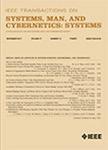版权所有:内蒙古大学图书馆 技术提供:维普资讯• 智图
内蒙古自治区呼和浩特市赛罕区大学西街235号 邮编: 010021

作者机构:Hebei Univ Technol Sch Artificial Intelligence Tianjin 300401 Peoples R China Jilin Univ Sch Artificial Intelligence Changchun 130000 Peoples R China City Univ Hong Kong Dept Comp Sci Hong Kong Peoples R China De Montfort Univ Sch Comp Sci & Informat Leicester LE1 9BH Leics England
出 版 物:《IEEE TRANSACTIONS ON SYSTEMS MAN CYBERNETICS-SYSTEMS》 (IEEE Trans. Syst. Man Cybern. Syst.)
年 卷 期:2022年第52卷第8期
页 面:5016-5027页
核心收录:
学科分类:0808[工学-电气工程] 08[工学] 0811[工学-控制科学与工程] 0812[工学-计算机科学与技术(可授工学、理学学位)]
基 金:National Natural Science Foundation of China
主 题:Clustering algorithms Gene expression Optimization RNA Sequential analysis Feature extraction Sociology Evolutionary multiobjective deep clustering (EMDC) multiobjective optimization single-cell RNA-seq dataset
摘 要:Single-cell RNA sequencing is a transformative technology that enables us to study the heterogeneity of the tissue at the cellular level. Clustering is used as the key computational approach to group cells under the transcriptome profiles from single-cell RNA-seq data. However, accurate identification of distinct cell types is facing the challenge of high dimensionality, and it could cause uninformative clusters when clustering is directly applied on the original transcriptome. To address such challenge, an evolutionary multiobjective deep clustering (EMDC) algorithm is proposed to identify single-cell RNA-seq data in this study. First, EMDC removes redundant and irrelevant genes by applying the differential gene expression analysis to identify differentially expressed genes across biological conditions. After that, a deep autoencoder is proposed to project the high-dimensional data into different low-dimensional nonlinear embedding subspaces under different bottleneck layers. Then, the basic clustering algorithm is applied in those nonlinear embedding subspaces to generate some basic clustering results to produce the cluster ensemble. To lessen the unnecessary cost produced by those clusterings in the ensemble, the multiobjective evolutionary optimization is designed to prune the basic clustering results in the ensemble, unleashing its cell type discovery performance under three objective functions. Multiple experiments have been conducted on 30 synthetic single-cell RNA-seq datasets and six real single-cell RNA-seq datasets, which reveal that EMDC outperforms eight other clustering methods and three multiobjective optimization algorithms in cell type identification. In addition, we have conducted extensive comparisons to effectively demonstrate the impact of each component in our proposed EMDC.